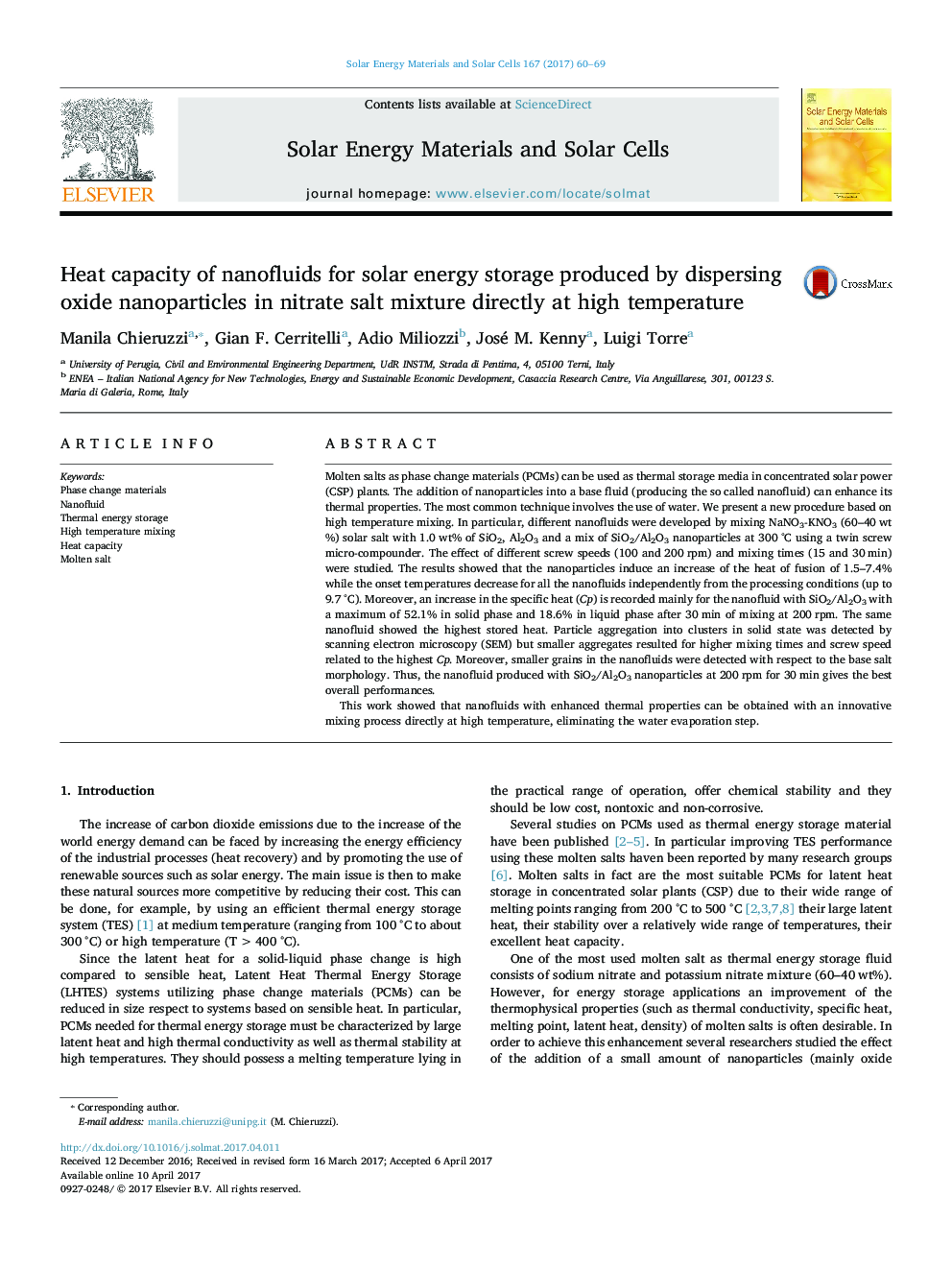| کد مقاله | کد نشریه | سال انتشار | مقاله انگلیسی | نسخه تمام متن |
|---|---|---|---|---|
| 6457259 | 1420656 | 2017 | 10 صفحه PDF | دانلود رایگان |
- A new high temperature mixing procedure proposed to prepare nanofluids.
- Oxide nanoparticles/ NaNO3-KNO3 at different screw speeds and mixing times were tested.
- SiO2/Al2O3 dispersed for 200Â rpm-30Â min increase heat capacity and stored energy of salt.
Molten salts as phase change materials (PCMs) can be used as thermal storage media in concentrated solar power (CSP) plants. The addition of nanoparticles into a base fluid (producing the so called nanofluid) can enhance its thermal properties. The most common technique involves the use of water. We present a new procedure based on high temperature mixing. In particular, different nanofluids were developed by mixing NaNO3-KNO3 (60-40 wt%) solar salt with 1.0 wt% of SiO2, Al2O3 and a mix of SiO2/Al2O3 nanoparticles at 300 °C using a twin screw micro-compounder. The effect of different screw speeds (100 and 200 rpm) and mixing times (15 and 30 min) were studied. The results showed that the nanoparticles induce an increase of the heat of fusion of 1.5-7.4% while the onset temperatures decrease for all the nanofluids independently from the processing conditions (up to 9.7 °C). Moreover, an increase in the specific heat (Cp) is recorded mainly for the nanofluid with SiO2/Al2O3 with a maximum of 52.1% in solid phase and 18.6% in liquid phase after 30 min of mixing at 200 rpm. The same nanofluid showed the highest stored heat. Particle aggregation into clusters in solid state was detected by scanning electron microscopy (SEM) but smaller aggregates resulted for higher mixing times and screw speed related to the highest Cp. Moreover, smaller grains in the nanofluids were detected with respect to the base salt morphology. Thus, the nanofluid produced with SiO2/Al2O3 nanoparticles at 200 rpm for 30 min gives the best overall performances.This work showed that nanofluids with enhanced thermal properties can be obtained with an innovative mixing process directly at high temperature, eliminating the water evaporation step.
349
Journal: Solar Energy Materials and Solar Cells - Volume 167, August 2017, Pages 60-69
